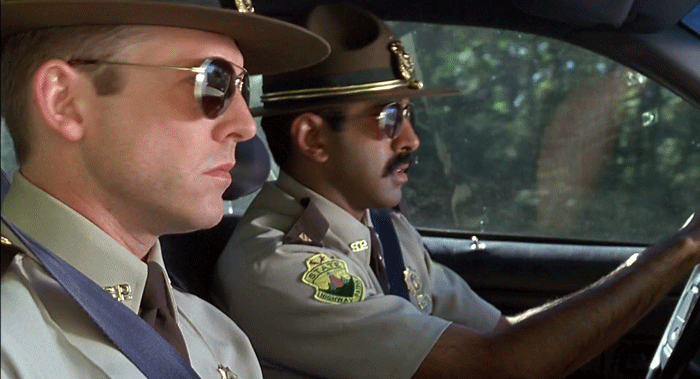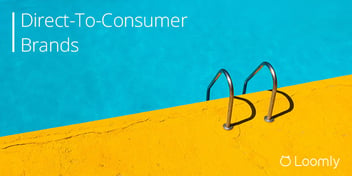Brand governance has always been a rigid term.
When you hear it, the words “enforce,” “impose,” or “control” are rarely far behind. And, there is often a long list of rules about what your brand is supposed to be.
Brand governance has been used this way for a good reason:
Brands needed a way to manage how their message was received.
The more they could ensure their brand was seen the way it was meant to be seen, the better.
But is that still the case?
Today’s fast-paced digital age has seen this rigid approach become harder to execute and even less effective in practice. All of which begs the question…
What is the alternative?
In this article, we would like to take the opportunity to show you.
We have outlined six guidelines that will help you take a more flexible approach to brand governance to help you manage a brand in today’s ever-changing environment.

Manage all your social media accounts in one place.
Craft, schedule, & auto-post content to all your social channels, then track analytics and manage interactions from a single, easy-to-use dashboard.
How Brand Governance Has Changed In The Digital Age
Brand governance has, until now, worked on the assumption that a brand belongs to the business that creates it.
But that is not strictly true.
In the words of Dr. Christina de Balanzo, “brands belong to people, not marketing” as they live in the minds of those who regularly interact with them — your customers and your employees.
Coca-Cola had no problems managing how people internalized their brands in the 1950s when all they needed to think about were logos, billboards, and typed customer service letters.

But brand managers today face a much tougher challenge. Why?
Because the digital age has amplified the number of people your brand can reach. Nowadays, marketing tools can connect our brands to hundreds of thousands of people in mere minutes.
This means you are working with:
- High volumes of interactions
- Across multiple feeds and platforms
Combine this with the fact people begin to form an opinion of your brand within one-twentieth of a second of their first interaction, and you can see the challenge this presents.
How, then, do you deal with this?
Simple:
You become flexible.
Brand governance in the digital age requires you to relinquish the perceived “control” of your brand and instead move with the needs of your community.
You need to:
- Stop “policing.”
- Start listening.
- Remain flexible.
- Respect the “sacred.”
- Empower front-line employees.
- Encourage collaboration.
At least if you want to successfully manage your brand and remain relevant in the coming years.
In the next section, we will look at each of these six guidelines and show you how to effectively incorporate them into your brand governance strategy.
6 Guidelines To Help You Better Manage Your Brand
1. Banish The “Brand Cop”
Brand Cops were once the “enforcers” of brand ideals.
They prescribed, insisted upon, and policed the way the brand was perceived. Their opinions were hard to budge, and their jobs depended on it.

But the flexible way of thinking about brand governance means the brand cop no longer has a place. At least, not as a stickler for the rules.
Instead, brands need to appoint people who will look for opportunities to:
- Adapt
- Collaborate
- Engage
- Empower
- Inspire
This allows a brand message to be improved and refined over time. It also puts the onus on brands to evaluate how well their brand meets the needs of their customers.
Removing the brand cop means you no longer look at people who see your brand from a different perspective as adversaries. Instead, as collaborators on an ongoing project.
2. Employ Social Listening
Social media plays an essential role in brand governance.
For many businesses, it is on social media platforms where branding happens. Especially for your top of the funnel leads, or those who need a little more nurturing marketing.
People will see, hear, and discuss your brand on these platforms and draw their own conclusions.
But, as research from the University of Wellington found, letting these interactions happen without brand governance can quickly cause you to lose control of your reputation.
While you do not need to “control” your reputation, you certainly need to be aware of the sentiment surrounding it. This makes social listening a vital tool for you to use.
Social listening is the process of using tools — like Mention — to monitor discussions and gather data on how people are talking about your brand:
- What do they frequently say?
- What do they like?
- What do they dislike?
- What caused a positive reaction?
- What caused a negative reaction?
These will all provide useful insight to help you adapt and adjust your brand messaging to better fit the needs of your community.
3. Get Clear On What Is Sacred, And What Can Be Played With
There are elements of your brand that are sacred.
These are the defining expressions that people use to recognize your brand and show the person that they are undoubtedly dealing with your brand.
To remove them would negatively impact your branding.
For example:
- McDonald’s always keep their golden arches
- WordPress websites always start life with the “Hello Dolly” plugin
- IKEA’s instruction manuals always contain an image of “IKEA Man”
These expressions need to remain a permanent part of your brand.
But, at the same time, you need to let go of elements that are not sacred and allow them to be flexible.
Maybelline, the make-up brand, has a great example of keeping a sacred element in place despite changing trends and platforms.
Their tagline, “Maybe she’s born with it, maybe it’s Maybelline,” is considered to be the most memorable strapline of the past 150 years.
It first aired in this advert from 1991:
And despite changes in needs, products, and even marketing strategies, it still features in their advertising all these years later:
It is a sacred element their customers have grown to know and love.
Be sure to separate the sacred and non-sacred elements of your branding and highlight the areas where you need to be rigid and where you can be creative.
4. Adapt The Messaging To The Platform
Modern brands need to make their sacred elements flexible to the people, platforms, and messages that are being used at any particular time.
This means that the core brand message stays the same but is then adapted to fit ever-changing situations.
It can beneficial to create an “if this, then that” approach to your branding and messaging, where people all agree on the course of action to take in a different situation.
This is especially important if your brand has multiple teams working across a wide range of marketing initiatives because it enables individuals to react swiftly without hurting the brand.
5. Empower Your Employees
Employees drive your brand.
Their interactions with your customers will shape how the brand is perceived, and it allows them to serve as a quasi-real-time mouthpiece for your brand.
Empowering them to explore, create, and cultivate brand messages can only make your brand stronger.

Although there will always be a brand “DNA” that needs to be adhered to, employees can tailor and rework the brand messaging to fit the needs of the customer in front of them.
Give them the freedom to experiment and you will find that they come back with ideas and solutions that otherwise would not have been possible to find.
6. Encourage Collaboration
We have already established two important things in this article:
- Your brand lives in the minds of those who interact with it.
- Your brand is going to organically evolve, no matter how much you try to control it.
So, why not embrace that change and give yourself an active role in managing and fostering that change?
The most effective way to do this is through collaboration.
By connecting with the ideas of:
- Customers
- Employees
- Agencies
- Peers
You can guide the evolution of your brand and be proactive in noticing the trends and changes that surround it.
This allows you to stop being reactive to the changes — and scrambling to keep up with them — and instead be proactive in ensuring these changes align with your brand’s DNA.
The secret to enabling collaboration is simple: it all comes down to setting up the right workflow.
Wrapping This Up
Brand governance is no longer something that can be enforced. Instead, it requires you to be flexible to the needs of different audiences, platforms, and messages.
Flexible marketing teams have the best chance of managing their brand and playing a proactive role in the long-term change of the brand.
You can become a flexible brand by employing the following guidelines:
- Stop “policing.”
- Start listening.
- Remain flexible.
- Respect the “sacred.”
- Empower front-line employees.
- Encourage collaboration.



